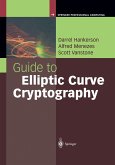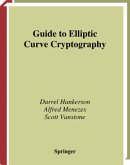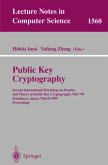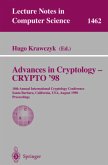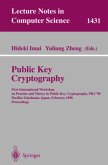Multivariate public key cryptosystems (MPKC) is a fast-developing new area in cryptography. In the past 10 years, MPKC schemes have increasingly been seen as a possible alternative to number theoretic-based cryptosystems such as RSA, as they are generally more efficient in terms of computational effort. As quantum computers are developed, MPKC will become a necessary alternative.
Multivariate Public Key Cryptosystems systematically presents the subject matter for a broad audience. Information security experts in industry can use the book as a guide for understanding what is needed to implement these cryptosystems for practical applications, and researchers in both computer science and mathematics will find this book a good starting point for exploring this new field. It is also suitable as a textbook for advanced-level students. Written more from a computational perspective, the authors provide the necessary mathematical theory behind MPKC; students with some previous exposure to abstract algebra will be well-prepared to read and understand the material.
Multivariate Public Key Cryptosystems systematically presents the subject matter for a broad audience. Information security experts in industry can use the book as a guide for understanding what is needed to implement these cryptosystems for practical applications, and researchers in both computer science and mathematics will find this book a good starting point for exploring this new field. It is also suitable as a textbook for advanced-level students. Written more from a computational perspective, the authors provide the necessary mathematical theory behind MPKC; students with some previous exposure to abstract algebra will be well-prepared to read and understand the material.
From the reviews:
"This book consists of eight chapters plus a five-page appendix on basic finite field theory. ... As a textbook, however, even in computer science, it might be suitable as a reference for specific aspects of an advanced course in cryptology with MPKCs as one of the topics. Certainly anyone interested in this area of cryptology would benefit from having this book as part of their library." (Richard A. Mollin, Zentralblatt MATH, Vol. 1105 (7), 2007)
"The book begins with an overview of the basic ideas and early development of multivariate public key cryptography and signature schemes. ... This work can be used by industry experts as a guide for understanding the basic mathematical structures needed to implement these cryptosystems for practical applications, and as a starting point for researchers in both computer science and the mathematical theory of polynomials over finite fields." (Adrian Atanasiu, ACM Computing Reviews, Vol. 49 (4), April, 2008)
"This book consists of eight chapters plus a five-page appendix on basic finite field theory. ... As a textbook, however, even in computer science, it might be suitable as a reference for specific aspects of an advanced course in cryptology with MPKCs as one of the topics. Certainly anyone interested in this area of cryptology would benefit from having this book as part of their library." (Richard A. Mollin, Zentralblatt MATH, Vol. 1105 (7), 2007)
"The book begins with an overview of the basic ideas and early development of multivariate public key cryptography and signature schemes. ... This work can be used by industry experts as a guide for understanding the basic mathematical structures needed to implement these cryptosystems for practical applications, and as a starting point for researchers in both computer science and the mathematical theory of polynomials over finite fields." (Adrian Atanasiu, ACM Computing Reviews, Vol. 49 (4), April, 2008)
"The book is a well-assorted collection of cryptosystems based on the problem of solving non-linear systems of polynomial equations over finite fields ... . The book, in most of its contents, provides a sufficiently self-contained introduction to the design and the cryptanalysis of MPKCs and some of the chapters of the book can undoubtedly represent a useful resource for an advanced course in public-key cryptography." (Roberto Civino, zbMATH 1506.94001, 2023)




